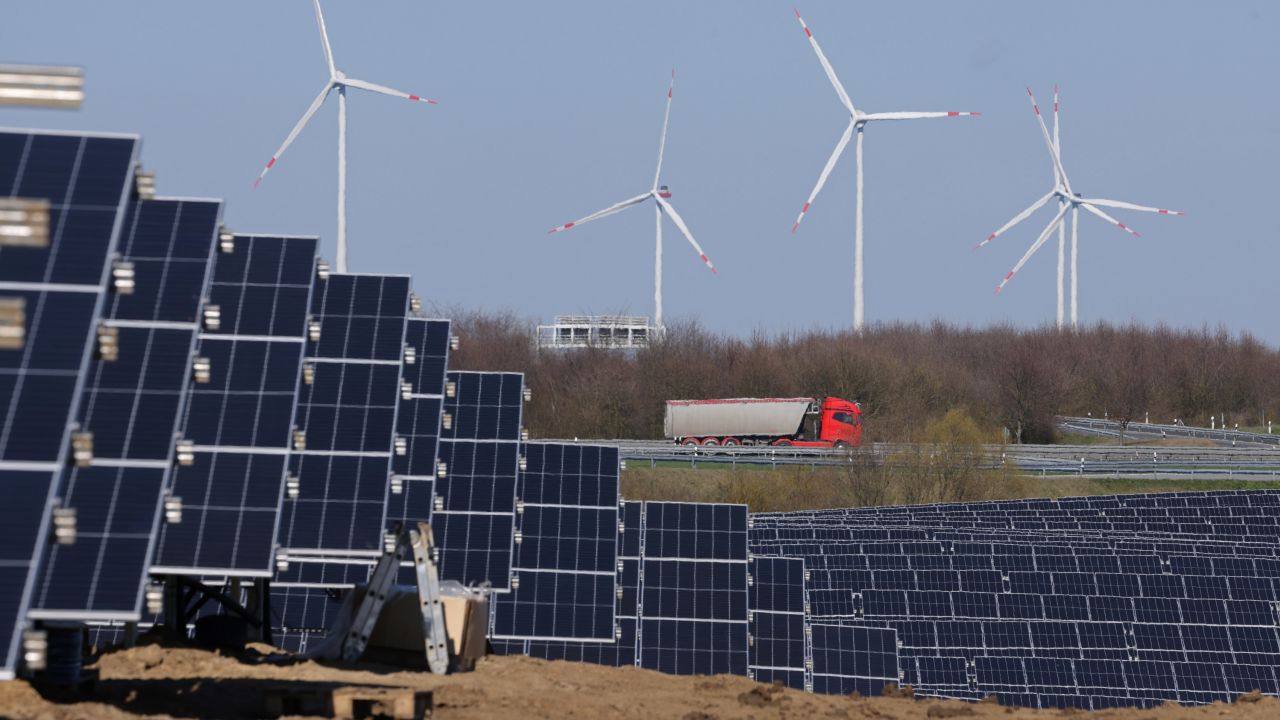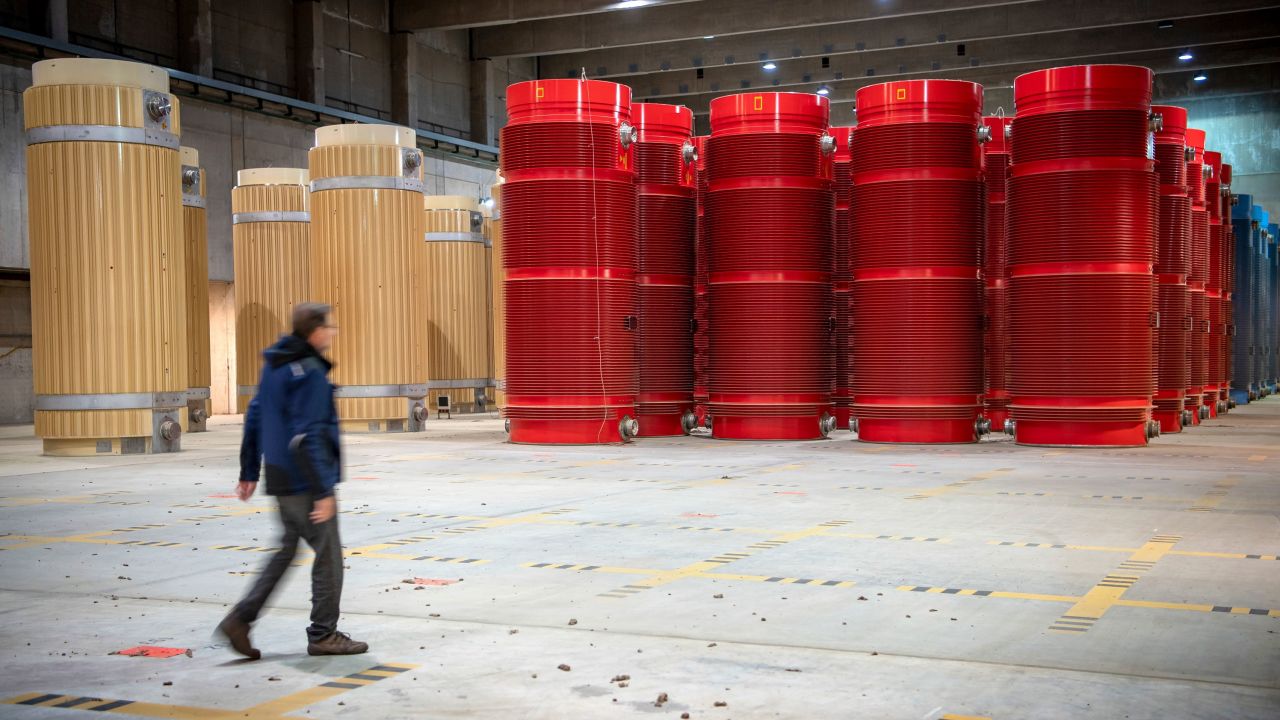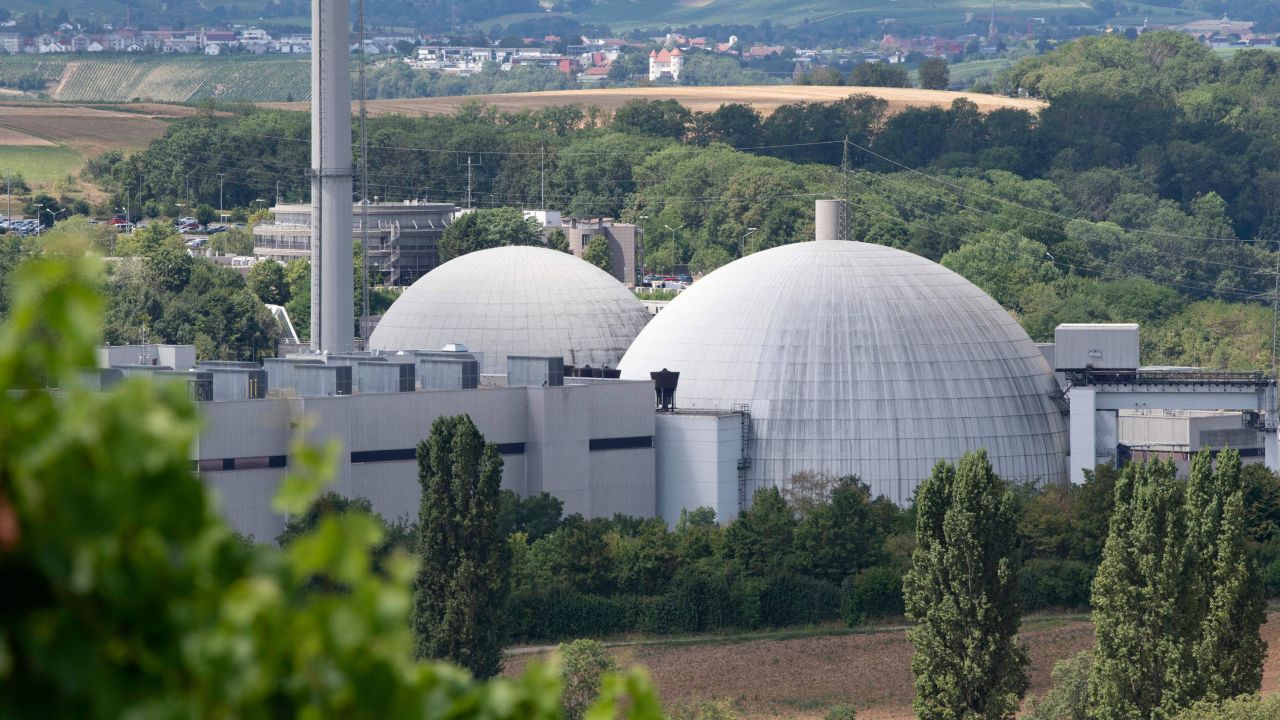CNN
—
Germany’s final three nuclear power plants close their doors on Saturday, marking the end of the country’s nuclear era that has spanned more than six decades.
Nuclear power has long been contentious in Germany.
There are those who want to end reliance on a technology they view as unsustainable, dangerous and a distraction from speeding up renewable energy.
But for others, closing down nuclear plants is short-sighted. They see it as turning off the tap on a reliable source of low-carbon energy at a time when drastic cuts to planet-heating pollution are needed.
Even as these debates rumble on, and despite last-minute calls to keep the plants online amid an energy crisis, the German government has been steadfast.
“The position of the German government is clear: nuclear power is not green. Nor is it sustainable,” Steffi Lemke, Germany’s Federal Minister for the Environment and Consumer Protection and a Green Party member, told CNN.
“We are embarking on a new era of energy production,” she said.
The closure of the three plants – Emsland, Isar 2 and Neckarwestheim – represents the culmination of a plan set in motion more than 20 years ago. But its roots are even older.
In the 1970s, a strong anti-nuclear movement in Germany emerged. Disparate groups came together to protest new power plants, concerned about the risks posed by the technology and, for some, the link to nuclear weapons. The movement gave birth to the Green Party, which is now part of the governing coalition.
Nuclear accidents fueled the opposition: The partial meltdown of the Three Mile Island nuclear power plant in Pennsylvania in 1979 and the 1986 catastrophe at Chernobyl that created a cloud of radioactive waste which reached parts of Germany.
In 2000, the German government pledged to phase out nuclear power and start shutting down plants. But when a new government came to power in 2009, it seemed – briefly – as if nuclear would get a reprieve as a bridging technology to help the country move to renewable energy.
Then Fukushima happened.
In March 2011, an earthquake and tsunami caused three reactors of the Fukushima Daiichi power plant to melt down. For many in Germany, Japan’s worst nuclear disaster was confirmation “that assurances that a nuclear accident of a large scale can’t happen are not credible,” Miranda Schreurs, professor of environment and climate policy at the Technical University of Munich, told CNN.
Three days later then-Chancellor Angela Merkel – a physicist who was previously pro-nuclear – made a speech called it an “inconceivable catastrophe for Japan” and a “turning point” for the world. She announced Germany would accelerate a nuclear phase-out, with older plants shuttered immediately.
Russia’s invasion of Ukraine, however, provided another plot twist.
Fearful of its energy security without Russian gas, the German government delayed its plan to close the final three plants in December 2022. Some urged a rethink.
But the government declined, agreeing to keep them running only until April 15.
For those in the anti-nuclear movement, it’s a moment of victory.
“It is a great achievement for millions of people who have been protesting nuclear in Germany and worldwide for decades,” Paul-Marie Manière, a spokesperson for Greenpeace, told CNN.
For critics of Germany’s policy, however, it’s irrational to turn off a low-carbon source of energy as the impacts of the climate crisis intensify.
“We need to keep existing, safe nuclear reactors operating while simultaneously ramping up renewables as fast as possible,” Leah Stokes, a professor of climate and energy policy at the University of California, Santa Barbara, told CNN.
The big risk, she said, is that fossil fuels fill the energy gap left by nuclear. Reductions in Germany’s nuclear energy since Fukushima have been primarily offset by increases in coal, according to research published last year.
Germany plans to replace the roughly 6% of electricity generated by the three nuclear plants with renewables, but also gas and coal.
More than 30% of Germany’s energy comes from coal, the dirtiest of the fossil fuels – and the government has made controversial decisions to turn to coal to help with energy security.
In January, protestors including Greta Thunberg converged on the west German village of Lützerath in an unsuccessful attempt to stop it being demolished to mine the coal underneath it.
“Building new coal capacity is the opposite of what we need,” said Stokes. Fossil fuels are a climate problem, but they’re also a health risk, she pointed out. Air pollution from fossil fuels is responsible for 8.7 million deaths a year, according to a recent analysis.
Veronika Grimm, one of Germany’s leading economists, told CNN that keeping nuclear power plants running for longer would have allowed Germany more time “to electrify extensively,” especially as renewable energy growth “remains sluggish.”

But supporters of the nuclear shutdown argue it will ultimately hasten the end of fossil fuels.
Germany has pledged to close its last coal-fired power station no later than 2038, with a 2030 deadline in some areas. It’s aiming for 80% of electricity to come from renewables by the end of this decade.
While more coal was added in the months following Fukushima, Schreurs said, nuclear shutdowns have seen a big push on clean energy. “That urgency and demand can be what it takes to push forward on the growth of renewables,” she said.
Representatives for Germany’s renewable energy industry said the shutdown will open the door for more investment into clean energy.
“Germany’s phase-out of nuclear power is a historic event and an overdue step in energy terms,” Simone Peter, president of the German Renewable Energy Federation (BEE), told CNN. “It is high time that we leave the nuclear age behind and consistently organize the renewable age.”
The impacts of nuclear power shouldn’t be overlooked either, Schreurs said, pointing to the carbon pollution created by uranium mining as well as the risk of health complications for miners. Plus, it creates a dependency on Russia, which supplies uranium for nuclear plants, she added.
Nuclear has also shown itself to have vulnerabilities to the climate crisis. France was forced to reduce nuclear power generation last year as the rivers used to cool reactors became too hot during Europe’s blistering heatwave.

Now Germany must work out what do with the deadly, high-level radioactive waste, which can remain dangerous for hundreds of thousands of years.
Currently, the nuclear waste is kept in interim storage next to the nuclear plants being decommissioned. But the search is on to find a permanent location where the waste can be stored safely for a million years.
The site needs to be deep – hundreds of meters underground. Only certain types of rock will do: Crystalline granite, rock salt or clay rock. It must be geologically stable with no risks of earthquakes or signs of underground rivers.
The process is likely to be fraught, complex and breathtakingly long – potentially lasting more than 100 years.
BGE, the Federal Company for Radioactive Waste Disposal, estimates a final site won’t be chosen until between 2046 and 2064. After that, it will take decades more to build the repository, fill it with the waste and seal it.
Plenty of other countries are treading paths similar to Germany’s. Denmark passed a resolution in the 1980s not to construct nuclear power plants, Switzerland voted in 2017 to phase out nuclear power, Italy closed its last reactors in 1990 and Austria’s one nuclear plant has never been used.
But, in the context of the war in Ukraine, soaring energy prices and pressure to reduce carbon pollution, others still want nuclear in the mix.
The UK, in the process of building a nuclear power plant, said in its recent climate strategy that energy nuclear power has a “crucial” role in “creating secure, affordable and clean energy.”
France, which gets about 70% of its power from nuclear, is planning six new reactors, and Finland opened a new nuclear plant last year. Even Japan, still dealing with the aftermath of Fukushima, is considering restarting reactors.

The US, the world’s biggest nuclear power, is also investing in nuclear energy and, in March, started up a new nuclear reactor, Vogtle 3 in Georgia – the first in years.
But experts suggest this doesn’t mark the start of a nuclear ramp up. Vogtle 3 came online six years late and at a cost of $30 billion, twice the initial budget.
It encapsulates the big problem that afflicts the whole nuclear industry: making the economics add up. New plants are expensive and can take more than a decade to build. “Even the countries that are talking pro-nuclear are having big trouble developing nuclear power,” Schreurs said.
Many nuclear power plants in Europe, the US and elsewhere are aging – plants have an operating life of around 40 to 60 years. As Germany puts an end to its nuclear era, it’s coming up to crunch time for others, Schreurs said.
“There will be a moment of decision as to whether nuclear really has a future”